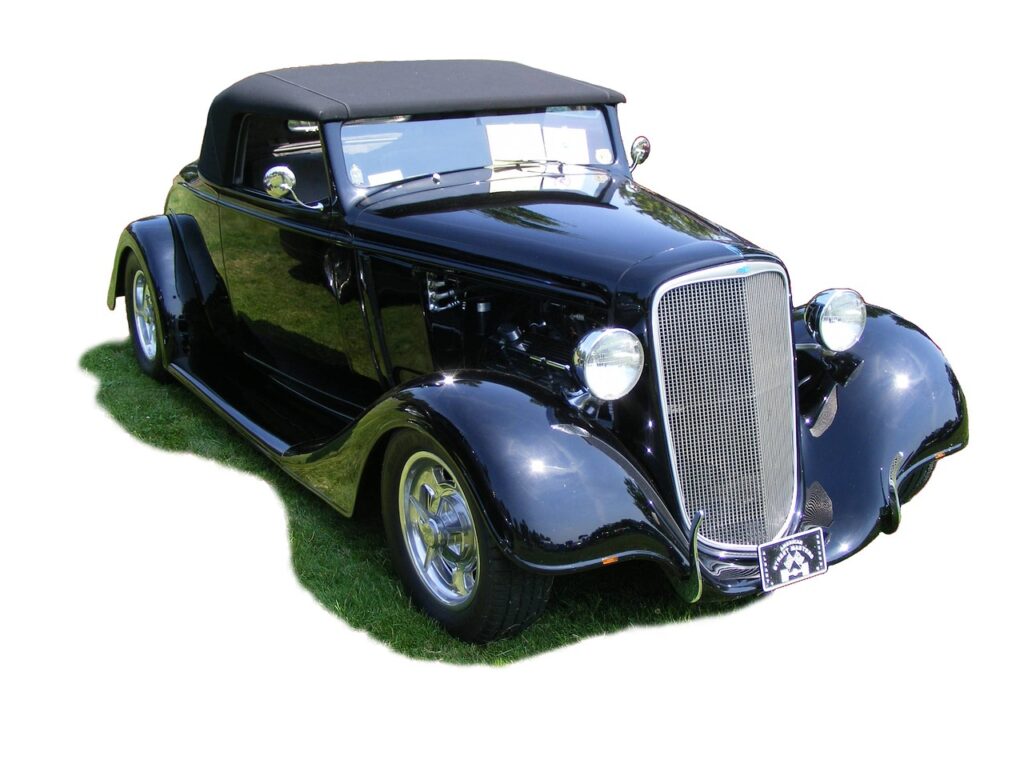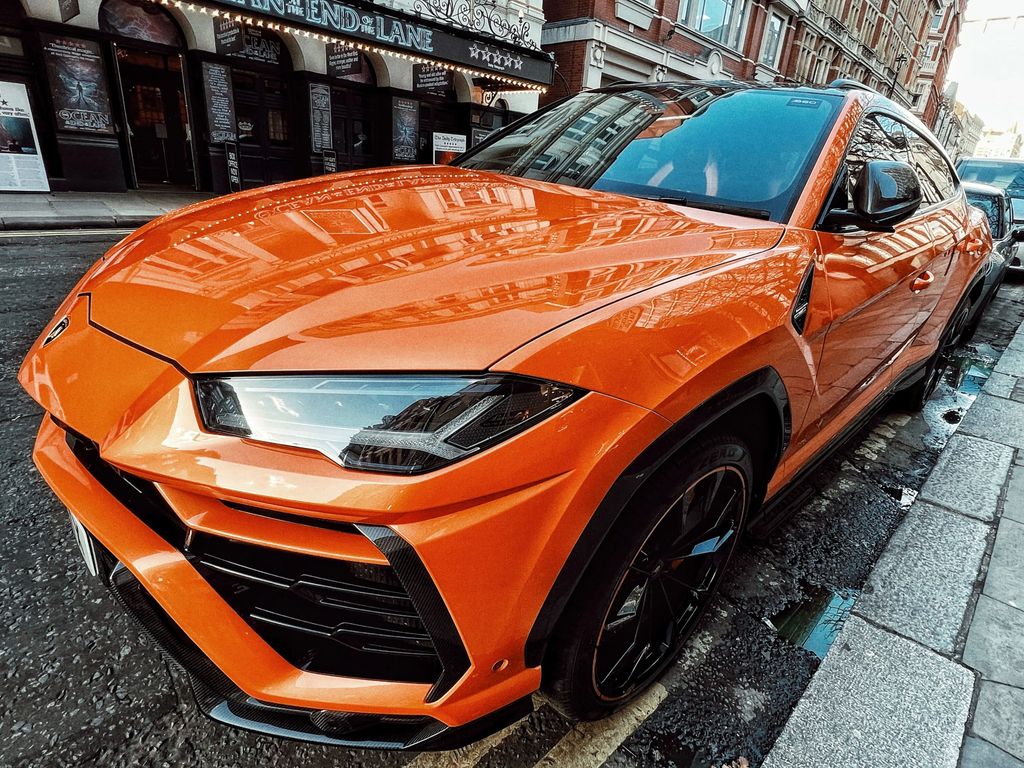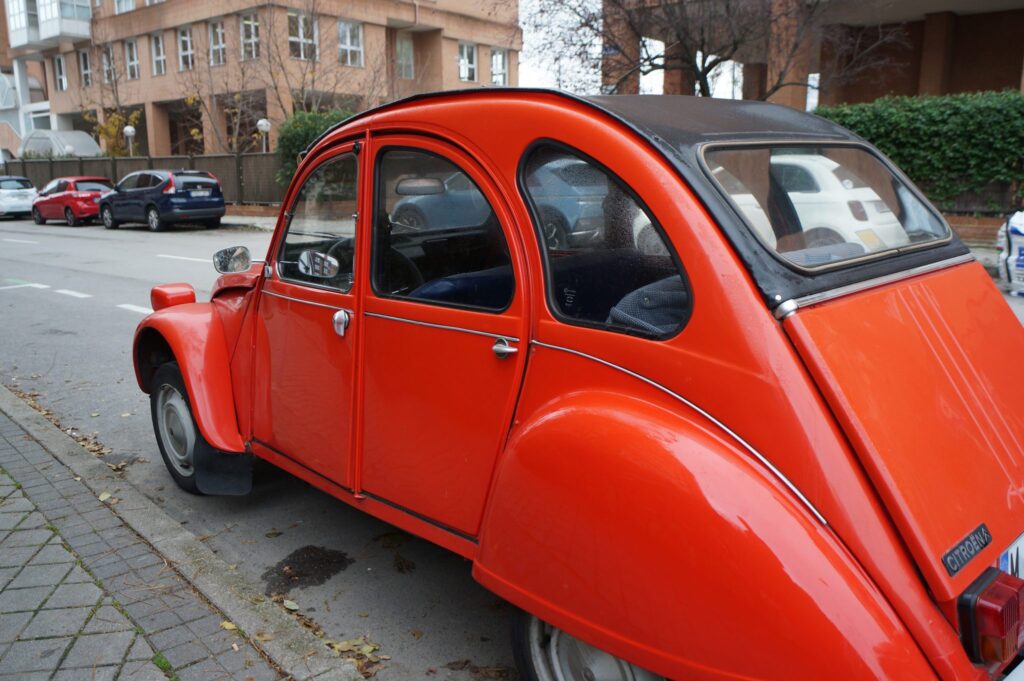
The 1960s stand as a golden era in automotive history, a decade of revolutionary design, unparalleled power, and a burgeoning car culture that continues to captivate enthusiasts worldwide. From the sleek lines of European grand tourers to the raw muscle of American pony cars, vehicles from this period often transcend mere transportation, evolving into highly sought-after collector’s items. For many, these classic machines are not just relics of the past; they are tangible investments, with certain iconic models now commanding prices reaching into the millions.
Understanding what elevates a classic car from a cherished possession to a multi-million dollar asset requires a deep dive into the intricate dynamics of the collector car market. Factors such as rarity, impeccable condition, the quality of restoration, and the ever-shifting tides of market demand all play pivotal roles in determining a vehicle’s ultimate worth. As highlighted by experts, “A collector car’s value is appraised according to its rarity, condition, restoration quality, and market demand.” This intricate interplay ensures that every high-value sale is a testament to both automotive excellence and market acumen.
In this insightful journey, we’ll explore some of the most emblematic cars from the 1960s that, under the right conditions and with the right provenance, exemplify this extraordinary appreciation in value. Drawing upon the comprehensive data and expert insights of Hagerty Valuation Tools, we’ll uncover the allure of these seven exceptional automobiles. We will focus on their defining characteristics, their impact on the automotive landscape, and the compelling reasons why they remain at the pinnacle of collector desire, embodying the ultimate dream for any serious automotive connoisseur.

1. **1967 Ferrari 330 GTC**The 1967 Ferrari 330 GTC is an undisputed masterpiece, a quintessential grand tourer that perfectly encapsulates the elegance and performance of Maranello in the swinging sixties. This model stands out as a “Market mover” in the collector car world, a testament to its enduring appeal and significant appreciation. Its design, characterized by a harmonious blend of Pininfarina sophistication and understated aggression, offered a more refined driving experience compared to its more flamboyant stablemates, making it a favorite among discerning enthusiasts seeking both speed and luxury.
Beneath its graceful exterior lay a potent 4.0-liter V12 engine, delivering a thrilling driving experience that defined the era’s performance benchmarks. The GTC’s exceptional balance of power, comfort, and precise handling made it an ideal vehicle for spirited drives across continents, embodying the true spirit of grand touring. Its technical prowess, combined with the unparalleled prestige of the Ferrari badge, ensures it holds a revered place in automotive history.
Rarity, as a critical determinant of value, significantly impacts the 330 GTC. Limited production numbers inherently elevate its desirability among collectors. As the market insights explain, “Limited production numbers make rare models harder to find, driving up demand and commanding higher prices.” This exclusivity, coupled with the meticulous Italian craftsmanship, means that pristine examples of the 330 GTC are exceedingly difficult to acquire, pushing their market values into the upper echelons of the collector car world.
The “Condition Grading” is paramount for a car of this caliber; a Concours-quality 1967 Ferrari 330 GTC, with its original engine and meticulously preserved aesthetics, commands substantial premiums. “Number-matching cars or low-production models fetch more among collectors,” and a GTC with documented provenance further enhances its allure. Its value reflects not just its initial engineering brilliance but also the sustained dedication of its custodians to preserving its original splendor, ensuring its status as a multi-million-dollar automotive icon.
Car Model Information: 2023 Lincoln Navigator Reserve
Name: Ferrari 330
Manufacturer: Ferrari
Class: Grand tourer
Layout: FR layout
Production: 1963–1968
Engine: Ferrari Colombo engine#330,V12 engine
Categories: 2+2 coupés, 24 Hours of Le Mans race cars, All articles needing additional references, Articles needing additional references from June 2012, Articles with short description
Summary: The Ferrari 330 was a series of V12 powered automobiles produced by Ferrari in 2+2 GT Coupé, two-seat Berlinetta, spyder, and race car versions between 1963 and 1968. The name “330” refers to the approximate displacement of each single cylinder in cubic centimeters.
The first, the 2+2 330 America, was a 250 GT/E with a larger 4.0-litre engine; the 330 GTC/GTS shared its chassis with the 275; the 330 GT 2+2 had its own chassis and bodywork; the mid-engined 330P racer was part of the Ferrari P series, produced in four models. Production ended in 1968 with the introduction of the Ferrari 365 series.
All 330 models used an evolution of the 400 Superamerica’s 4.0 L Colombo V12 engine. Bore and stroke were unusual 77 mm by 71 mm. It was substantially changed, with wider bore spacing and an alternator replacing a generator.
Get more information about: Ferrari 330
Buying a high-performing used car >>>
Brand: Ferrari Model: 330 GTC
Price: $66,995 Mileage: 23,920 mi.
Read more about: The Automotive Pantheon: A Curated Journey Through Jerry Seinfeld’s Most Coveted and Coolest Car Collection
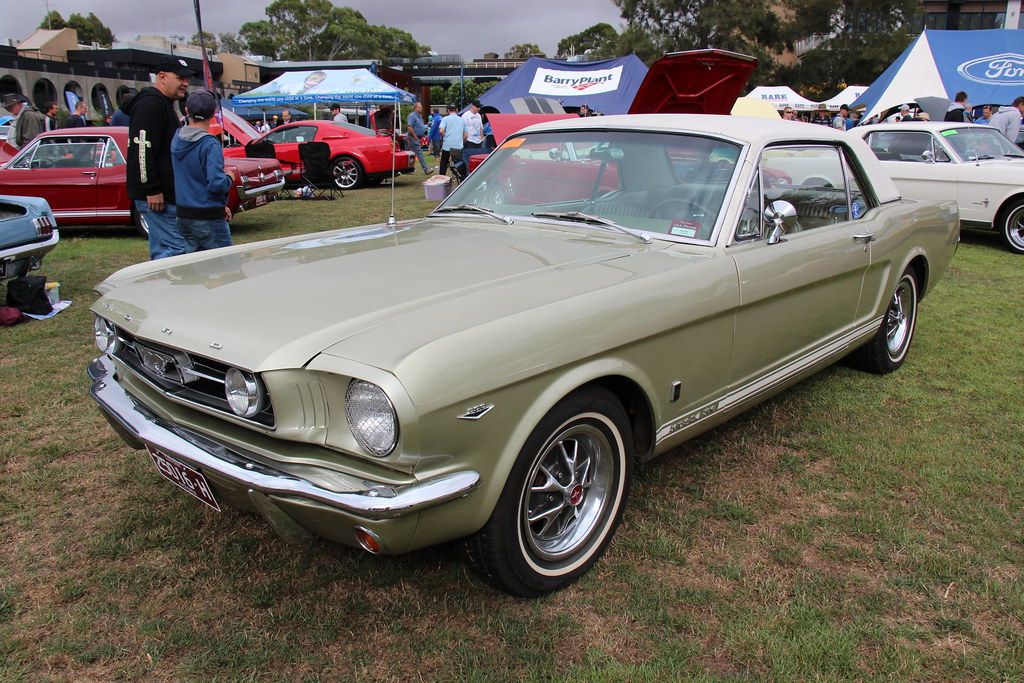
2. **1966 Ford Mustang**The 1966 Ford Mustang stands as a pivotal icon in American automotive culture, solidifying the blueprint for what would become known as the “pony car” segment. Building on the runaway success of its 1965 predecessor, the ’66 model refined the formula that captured the hearts of a generation. Its accessible yet thrilling driving experience made it an instant classic, a sentiment perfectly encapsulated by the statement, “The Ford Mustang defined the ‘pony car’ in 1965, and has delivered accessible yet thrilling driving experiences ever since.” This particular year is often revered for its classic styling cues and widespread popularity.
Under the hood, the 1966 Mustang offered a range of engines, with the 8-cyl. 289cid/200hp 2bbl configuration being a popular choice, providing a robust blend of power and everyday usability. While perhaps not the outright fastest car of its era, its balanced performance, combined with its striking design and customizable options, cemented its appeal. The ability to personalize one’s Mustang created a unique bond between owner and machine, a characteristic that still resonates deeply with collectors today.
The market demand for classic Mustangs remains incredibly strong, a fact underscored by the 1966 model frequently appearing on “Most watched” lists in collector car valuation tools. This sustained interest reflects a broad base of enthusiasts who appreciate its historical significance and timeless design. The economic principle of supply and demand applies rigorously to classic cars, and the Mustang’s enduring popularity drives competitive bidding, especially for well-preserved or expertly restored examples.
While a ‘Good condition’ 1967 Ford Mustang GT might be estimated in the range of $35,000 – $45,000, exceptional, rare variants of the 1966 model, especially those with unique factory options, compelling provenance, or in Concours-quality condition, can achieve significantly higher valuations. These pristine examples demonstrate the dramatic impact of “Condition Grading” and “Restoration Quality” on market value, showcasing how meticulous attention to detail and authenticity can transform a beloved classic into a million-dollar asset for the astute collector.
Car Model Information: 2024 Ford Mustang GT
Name: Ford Mustang
Caption: 2024 Ford Mustang GT Convertible
Aka: Ford T5 (Germany)
Manufacturer: Ford Motor Company
Production: March 1964 – present
ModelYears: 1965–present
Class: Unbulleted list
BodyStyle: Unbulleted list
Layout: Front-engine, rear-wheel-drive layout
Categories: 1970s cars, 1980s cars, 1990s cars, 2+2 coupés, 2000s cars
Summary: The Ford Mustang is an American automobile manufactured and marketed by Ford since 1964, as Ford’s longest nameplate in continuous production. Currently in its seventh generation, it is the fifth-best selling Ford car nameplate. The namesake of the “pony car” automobile segment, the Mustang was developed as a highly styled line of sporty coupes and convertibles derived from existing model lines, initially distinguished by its pronounced “long hood, short deck” proportions.
Originally predicted to sell 100,000 vehicles yearly, the 1965 Mustang became the most successful vehicle launch since the 1927 Model A. Introduced on April 17, 1964 (16 days after the Plymouth Barracuda), over 400,000 units were sold in its first year; the one-millionth Mustang was sold within two years of its launch. In August 2018, Ford produced the 10-millionth Mustang; matching the first 1965 Mustang, the vehicle was a 2019 Wimbledon White convertible with a V8 engine.
The success of the Mustang launch led to multiple competitors from other American manufacturers, including the Chevrolet Camaro and Pontiac Firebird (1967), AMC Javelin (1968), and Dodge Challenger (1970). It also competed with the Plymouth Barracuda, which was launched around the same time. The Mustang also had an effect on designs of coupes worldwide, leading to the marketing of the Toyota Celica and Ford Capri in the United States (the latter, by Lincoln-Mercury). The Mercury Cougar was launched in 1967 as a unique-bodied higher-trim alternative to the Mustang; during the 1970s, it included more features and was marketed as a personal luxury car.
From 1965 until 2004, the Mustang shared chassis commonality with other Ford model lines, staying rear-wheel-drive throughout its production. From 1965 to 1973, the Mustang was derived from the 1960 Ford Falcon compact. From 1974 until 1978, the Mustang (denoted Mustang II) was a longer-wheelbase version of the Ford Pinto. From 1979 until 2004, the Mustang shared its Fox platform chassis with 14 other Ford vehicles (becoming the final one to use the Fox architecture). Since 2005, Ford has produced two generations of the Mustang, each using a distinct platform unique to the model line.
Through its production, multiple nameplates have been associated with the Ford Mustang series, including GT, Mach 1, Boss 302/429, Cobra (separate from Shelby Cobra), and Bullitt, along with “5.0” fender badging (denoting 4.9 L OHV or 5.0 L DOHC V8 engines).
Get more information about: Ford Mustang
Buying a high-performing used car >>>
Brand: Ford Model: Mustang
Price: $38,965 Mileage: 13,465 mi.
Read more about: Watch Out: 12 Compact Cars Prone to Major Engine Issues Before 80,000 Miles – A Consumer Guide
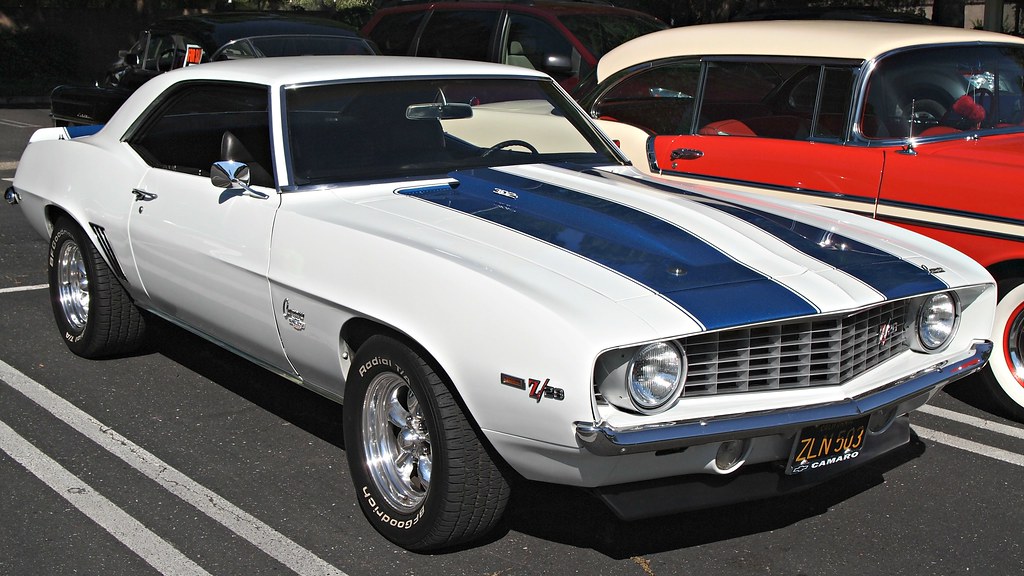
3. **1969 Chevrolet Camaro**As the 1960s drew to a close, the muscle car era reached its zenith, and the 1969 Chevrolet Camaro emerged as one of its most definitive and aggressive statements. A formidable competitor to the Ford Mustang, the ’69 Camaro offered a more muscular, performance-oriented aesthetic that immediately captured the imagination of American gearheads. Its iconic styling, characterized by a wider, lower stance and distinctive grille, projected an image of raw power and untamed spirit, making it instantly recognizable and highly desirable.
The heart of many ’69 Camaros was a formidable engine, with variants like the 8-cyl. 302cid/290hp 4bbl delivering exhilarating performance that truly defined the muscle car experience. These powerplants were designed for straight-line speed and thrilling acceleration, attributes that have only grown in legendary status over time. The mechanical prowess and engineering focus on high output cemented the Camaro’s reputation as a serious contender on both the street and the track, establishing its performance pedigree.
The 1969 Camaro consistently ranks high on “Most watched” lists, indicating its unwavering popularity and strong market demand among collectors. This intense interest contributes to what the market analysis describes: “Increased demand for specific models raises their worth as collectors compete for ownership, reflecting the car’s appeal and emotional resonance.” The allure of this particular model stems from its perfect blend of aggressive styling, potent performance, and a rich racing heritage, making it a cornerstone of any serious muscle car collection.
When considering value, the 1969 Camaro showcases how “Rarity and Provenance” can dramatically influence prices. While many were produced, highly original, “number-matching” examples, especially those equipped with rare performance packages (like Z/28s or COPOs), command substantial premiums. A meticulously restored or perfectly preserved ’69 Camaro in “Excellent” or “Concours” condition, with documented history and original components, easily transcends typical values, demonstrating the potential for these legendary muscle cars to achieve multi-million-dollar valuations within the competitive collector’s market.
Car Model Information: 2018 Chevrolet Camaro 1LS
Name: Chevrolet Camaro
Manufacturer: Chevrolet
Production: 1966–2002,2009–2023
ModelYears: 1967–2002,2010–2024
Class: Pony car
BodyStyle: coupe,convertible
Platform: GM F platform,GM Zeta platform,GM Alpha platform
Layout: Front-engine, rear-wheel-drive layout
Categories: 1970s cars, 1980s cars, 1990s cars, 2+2 coupés, 2000s cars
Summary: The Chevrolet Camaro is a mid-size American automobile manufactured by Chevrolet, classified as a pony car. It first went on sale on September 29, 1966, for the 1967 model year and was designed to compete with the Ford Mustang. The Camaro shared its platform and major components with the Firebird, produced by General Motors’ Pontiac division that was also introduced for the 1967 model year.
Four distinct generations of the Camaro were developed before production ended in 2002. The nameplate was revived on a concept car that evolved into the fifth-generation Camaro; production started on March 16, 2009.
Production of the sixth generation of the Camaro ended in December 2023, for the 2024 model year.
Get more information about: Chevrolet Camaro
Buying a high-performing used car >>>
Brand: Chevrolet Model: Camaro
Price: $19,125 Mileage: 69,196 mi.
Read more about: Gone But Not Forgotten: Unearthing the Stories Behind 14 Iconic American Cars That Drove Off into the Sunset
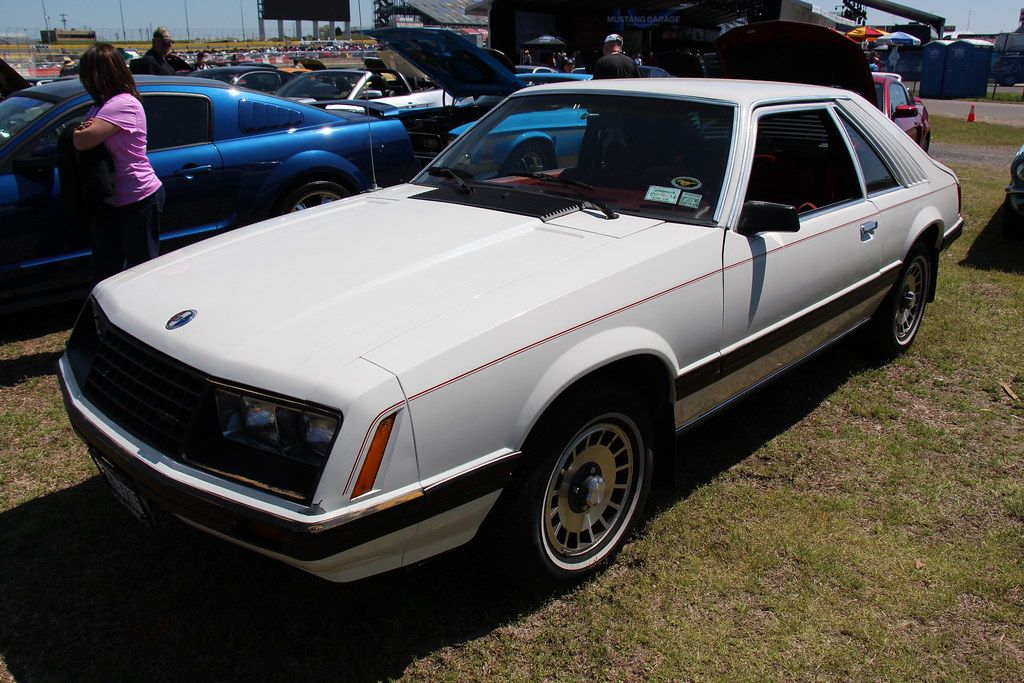
4. **1965 Ford Mustang**The 1965 Ford Mustang is not merely a car; it’s a cultural phenomenon, marking the inception of the pony car segment and fundamentally reshaping the automotive landscape. Launched as an immediate sensation, its blend of sporty styling, compact size, and accessible pricing created an entirely new market. As the context proudly states, “The Ford Mustang defined the ‘pony car’ in 1965, and has delivered accessible yet thrilling driving experiences ever since.” This foundational model represents a groundbreaking moment in automotive history, appealing to a vast audience eager for a car that was both exciting and attainable.
Beyond its cultural impact, the 1965 Mustang offered a surprisingly capable platform, especially when equipped with the optional 8-cyl. 289cid/200hp 2bbl engine. This powerplant provided a lively performance suitable for both daily driving and weekend thrills, delivering on the promise of an accessible yet engaging experience. Its relatively lightweight chassis and responsive handling characteristics, for the era, made it a joy to drive, endearing it to legions of drivers and firmly establishing its performance credentials.
The historical significance and widespread appeal of the 1965 Mustang contribute immensely to its enduring market demand. It is not uncommon for this inaugural model to be featured on “Most watched” lists, as collectors and enthusiasts alike vie for pristine examples. The “Market Data Aggregation” used by valuation tools, which pulls from diverse sources like Hagerty and auction histories, consistently reflects a robust and competitive market for these iconic vehicles, driven by nostalgia and genuine appreciation for its place in history.
While a ‘Good condition’ 1967 Ford Mustang GT might offer an estimated value of $35,000 – $45,000, it’s crucial to understand that the “Condition Grading” and “Rarity and Provenance” of a 1965 Mustang can catapult its value into the millions. A completely original, “number-matching” example, especially one with unique factory options, an unblemished history, or a significant racing pedigree, commands prices far exceeding standard models. These rare, Concours-quality ’65 Mustangs are considered crown jewels in the collector world, showcasing how historical importance, combined with exceptional preservation, creates an investment of truly monumental proportions. These examples illustrate the profound impact that meticulous care and verified originality have on transforming a cherished classic into a multi-million-dollar automotive legend.
As we journey deeper into the illustrious decade of the 1960s, our exploration of automotive legends continues, revealing more machines that have transcended their original purpose to become invaluable pieces of history. These vehicles represent the pinnacle of engineering and design from their respective nations, each possessing a unique blend of attributes that makes them exceptionally desirable to collectors worldwide. Their stories illustrate the intricate dance between heritage, craftsmanship, and the ever-evolving dynamics of the collector car market. Let’s delve into three more iconic rides that epitomize this extraordinary appreciation.
Car Model Information: 2024 Ford Mustang GT
Name: Ford Mustang
Caption: 2024 Ford Mustang GT Convertible
Aka: Ford T5 (Germany)
Manufacturer: Ford Motor Company
Production: March 1964 – present
ModelYears: 1965–present
Class: Unbulleted list
BodyStyle: Unbulleted list
Layout: Front-engine, rear-wheel-drive layout
Categories: 1970s cars, 1980s cars, 1990s cars, 2+2 coupés, 2000s cars
Summary: The Ford Mustang is an American automobile manufactured and marketed by Ford since 1964, as Ford’s longest nameplate in continuous production. Currently in its seventh generation, it is the fifth-best selling Ford car nameplate. The namesake of the “pony car” automobile segment, the Mustang was developed as a highly styled line of sporty coupes and convertibles derived from existing model lines, initially distinguished by its pronounced “long hood, short deck” proportions.
Originally predicted to sell 100,000 vehicles yearly, the 1965 Mustang became the most successful vehicle launch since the 1927 Model A. Introduced on April 17, 1964 (16 days after the Plymouth Barracuda), over 400,000 units were sold in its first year; the one-millionth Mustang was sold within two years of its launch. In August 2018, Ford produced the 10-millionth Mustang; matching the first 1965 Mustang, the vehicle was a 2019 Wimbledon White convertible with a V8 engine.
The success of the Mustang launch led to multiple competitors from other American manufacturers, including the Chevrolet Camaro and Pontiac Firebird (1967), AMC Javelin (1968), and Dodge Challenger (1970). It also competed with the Plymouth Barracuda, which was launched around the same time. The Mustang also had an effect on designs of coupes worldwide, leading to the marketing of the Toyota Celica and Ford Capri in the United States (the latter, by Lincoln-Mercury). The Mercury Cougar was launched in 1967 as a unique-bodied higher-trim alternative to the Mustang; during the 1970s, it included more features and was marketed as a personal luxury car.
From 1965 until 2004, the Mustang shared chassis commonality with other Ford model lines, staying rear-wheel-drive throughout its production. From 1965 to 1973, the Mustang was derived from the 1960 Ford Falcon compact. From 1974 until 1978, the Mustang (denoted Mustang II) was a longer-wheelbase version of the Ford Pinto. From 1979 until 2004, the Mustang shared its Fox platform chassis with 14 other Ford vehicles (becoming the final one to use the Fox architecture). Since 2005, Ford has produced two generations of the Mustang, each using a distinct platform unique to the model line.
Through its production, multiple nameplates have been associated with the Ford Mustang series, including GT, Mach 1, Boss 302/429, Cobra (separate from Shelby Cobra), and Bullitt, along with “5.0” fender badging (denoting 4.9 L OHV or 5.0 L DOHC V8 engines).
Get more information about: Ford Mustang
Buying a high-performing used car >>>
Brand: Ford Model: Mustang
Price: $38,965 Mileage: 13,465 mi.
Read more about: Watch Out: 12 Compact Cars Prone to Major Engine Issues Before 80,000 Miles – A Consumer Guide

5. **1964 Jaguar E-type**The 1964 Jaguar E-type, often hailed as one of the most beautiful cars ever made, is an undisputed masterpiece of British engineering and design. Its breathtaking lines and sensuous curves captivated the world upon its debut, a testament to its timeless aesthetic appeal. This vehicle’s inclusion in the “2025 Bull Market list” is no surprise, signaling its consistent and growing appreciation among discerning collectors who recognize its profound historical and cultural significance. It stands as a symbol of automotive elegance, blending performance with unparalleled style.
Beneath its stunning exterior lay an equally impressive mechanical heart. The E-type boasted a sophisticated independent suspension system on all four wheels and disc brakes, features that were cutting-edge for its era and contributed to its exceptional handling and dynamic capabilities. Power came from a robust engine, providing exhilarating performance that allowed the E-type to live up to its sporting pedigree. This combination of beauty and brawn made it a formidable competitor on both road and track, etching its name into the annals of performance motoring.
Rarity plays a pivotal role in the soaring value of pristine 1964 E-types. While relatively popular, finding examples in “Excellent” or “Concours” condition, especially those with documented “Provenance” and original components, is increasingly challenging. As market insights confirm, “Limited production numbers make rare models harder to find, driving up demand and commanding higher prices.” This scarcity, coupled with the meticulous craftsmanship inherent in a well-preserved or expertly restored E-type, ensures its continued status as a highly sought-after collectible.
The “Condition Grading” for a 1964 Jaguar E-type is paramount; a vehicle that has undergone a high-quality restoration, adhering strictly to original specifications, can dramatically elevate its market worth. Such attention to detail, maintaining the car’s authenticity and visual charm, transforms it into a true masterpiece of automotive art. The E-type’s enduring appeal is not just about nostalgia; it is about owning a piece of automotive perfection that continues to set benchmarks for design and driving pleasure, making it a multi-million-dollar legend for the ages.
Car Model Information: 1971 Jaguar E-Type Restomod
Sp: uk
Name: Jaguar E-Type
Caption: 1961 E-Type Series 1 3.8-Litre, the first production model of this open two-seater
Aka: Jaguar XK-E , Jaguar V-12
Manufacturer: Jaguar Cars
Production: 1961–1974
Class: Sports car
Predecessor: Jaguar XK150
Related: Jaguar D-Type,Jaguar XJ13
Successor: Jaguar XJS
Layout: FMR layout
Assembly: Coventry,England
Designer: Malcolm Sayer
Categories: 1970s cars, 2+2 coupés, All Wikipedia articles written in British English, All articles with dead external links, All articles with specifically marked weasel-worded phrases
Summary: The Jaguar E-Type, or the Jaguar XK-E for the North American market, is a British front mid-engined sports car that was manufactured by Jaguar Cars Ltd from 1961 to 1974. Its sleek appearance, advanced technologies, high performance, and competitive pricing established it as an icon. The E-Type’s claimed 150 miles per hour (240 km/h) top speed, sub-7-second 0 to 60 mph (97 km/h) acceleration, largely unitary body construction, front and rear independent suspension with disc brakes, mounted inboard at the rear, and rack-and-pinion steering spurred industry-wide changes.
The E-Type was based on Jaguar’s D-Type racing car, which had won the 24 Hours of Le Mans for three consecutive years beginning in 1955.
The E-Type employed what was, for the early 1960s, a novel design principle, with a front subframe carrying the engine, front suspension and front bodywork bolted directly to the body tub. No ladder frame chassis, as was common at the time, was needed and as such the first cars weighed only 1,315 kg (2,899 lb).
It is rumored that, on its debut on 15 March 1961, Enzo Ferrari called it “the most beautiful car ever made”, but this statement is not fully confirmed. In 2004, Sports Car International magazine placed the E-Type at number one on their list of Top Sports Cars of the 1960s. In March 2008, the Jaguar E-Type ranked first in The Daily Telegraph’s online list of the world’s “100 most beautiful cars” of all time.
Get more information about: Jaguar E-Type
Buying a high-performing used car >>>
Brand: Jaguar Model: E-type
Price: $64,900 Mileage: 2,455 mi.
Read more about: Unleashing Performance, Ensuring Protection: 12 Sports Cars Where Speed Meets Stellar Safety Ratings
6. **1968 Volvo 1800S**The 1968 Volvo 1800S presents a fascinating chapter in automotive history, often recognized for its remarkably elegant and sophisticated design that defied Volvo’s more utilitarian image. This striking grand tourer, with its distinctive Pinin Farina-inspired styling, offered a blend of European flair and Swedish engineering integrity. Its presence on the “2025 Bull Market list” underscores its burgeoning appeal, signaling a strong surge in collector interest as enthusiasts discover its unique charm and enduring quality.
While not celebrated for outright blistering speed, the 1800S was lauded for its robust engineering and legendary reliability. Powered by a durable four-cylinder engine, it delivered a smooth, comfortable, and remarkably dependable driving experience, perfect for long-distance grand touring. This car epitomized sensible performance and enduring quality, proving that a vehicle could be both stylish and incredibly tough, a testament to Volvo’s commitment to safety and longevity even in a sporty package.
The market for the 1800S is a compelling example of how diverse classic models can achieve significant valuations. Its rising prominence on “Most watched” lists is a clear indicator of “Increased demand for specific models raises their worth as collectors compete for ownership, reflecting the car’s appeal and emotional resonance.” Collectors are increasingly drawn to its unique blend of rarity, reliability, and undeniable classic European styling, making well-maintained examples a smart acquisition.
“Condition” and “Restoration Quality” are particularly impactful for the 1968 Volvo 1800S. An example in “Excellent” or “Concours” condition, especially one that retains its original “Number-matching” components and boasts a meticulously documented history, commands significant premiums. The sustained appreciation of the 1800S is a testament to the value placed on originality and the careful preservation of its distinctive character, solidifying its place among the elite classics now worth millions.
Car Model Information: 2024 Volvo XC90 Recharge Plug-In Hybrid Ultimate
Name: Volvo P1800
Caption: 1965 Volvo 1800S
Designer: Pelle Petterson
Manufacturer: Volvo Cars
Assembly: West Bromwich,Torslanda,Gothenburg,Arica
Production: 1961–1973,coupé: 39,407,sports estate: 8,077
Layout: Front-engine, rear-wheel-drive layout
Transmission: Volvo M40 transmission,Overdrive_(mechanics)#In_Europe,Borg-Warner 35 transmission
Length: convert
Width: 1700 mm
Abbr: on
Height: convert
Weight: convert
Wheelbase: 2450 mm
Related: Volvo Amazon
Engine: Volvo B18 engine#B18,Volvo B18 engine#B20
Class: Sports car
BodyStyle: coupe,shooting brake
Predecessor: Volvo P1900
Categories: 1970s cars, All articles needing additional references, All articles with dead external links, All articles with unsourced statements, Articles needing additional references from March 2018
Summary: The Volvo P1800 (pronounced eighteen-hundred) is a 2+2, front-engine, rear-drive sports car manufactured and marketed by Volvo Cars between 1961 and 1973. Originally a coupé (1961–1972), it was also offered in a shooting brake configuration toward the end of its production (1972–1973). Styling was by Pelle Petterson under the tutelage of Pietro Frua when Frua’s studio was a subsidiary of the Italian carrozzeria Ghia, and the mechanicals were derived from Volvo’s Amazon/122 series.
Marketed as a touring car rather than a sports car, the P1800 became widely known when driven by British actor Roger Moore in the television series The Saint, which aired from 1962 to 1969.
In 1998, an 1800S owned by Irv Gordon (1940–2018) was certified as the highest mileage private vehicle driven by the original owner in non-commercial service—having exceeded 3.25 million miles (over 5.23 million km) as of his death in 2018.
Get more information about: Volvo P1800
Buying a high-performing used car >>>
Brand: Volvo Model: 1800S
Price: $62,997 Mileage: 11,747 mi.
Read more about: From Road Rage to Rental Cars: 14 Vehicles Fueling Our Deepest Driver Stereotypes
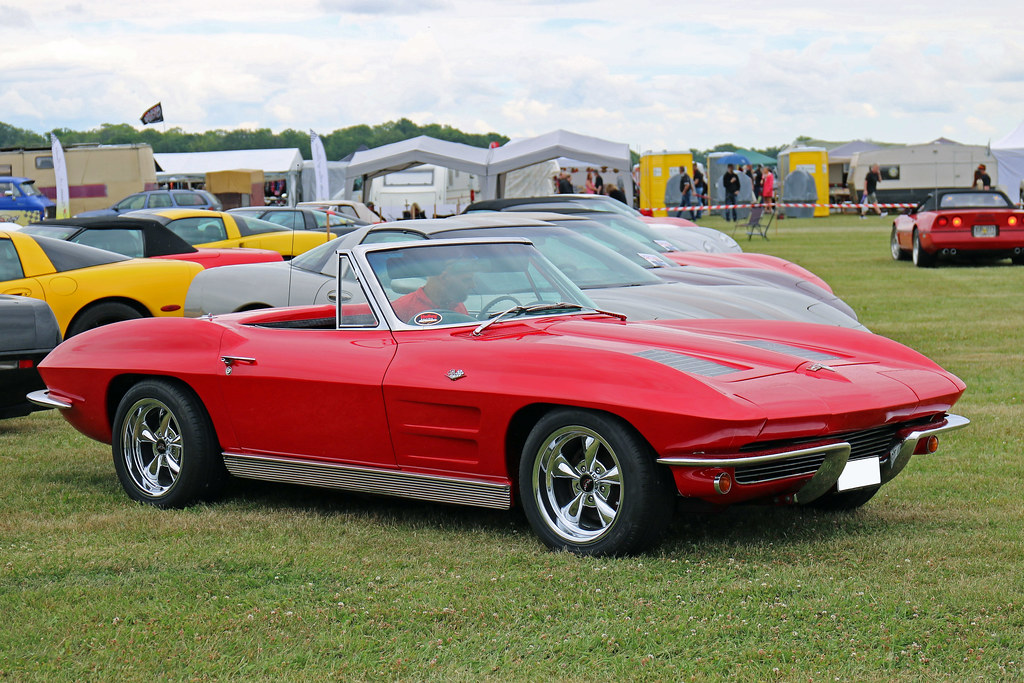
7. **1963 Chevrolet Corvette**No discussion of iconic 1960s automobiles would be complete without revering the 1963 Chevrolet Corvette, particularly the legendary Split-Window Coupe. This model is an absolute landmark in American automotive design, its bold, aggressive styling and distinctive rear window instantly making it one of the most recognizable and coveted Corvettes ever produced. As the context proudly states, “The Chevrolet Corvette has always been America’s most popular sports car,” and the ’63 model stands as a monumental achievement in its storied lineage, captivating enthusiasts with its groundbreaking aesthetic.
Underneath its revolutionary bodywork, the 1963 Corvette packed serious performance. It offered a range of potent V8 engines, with the 8-cyl. 327cid/360hp FI L84 being a particular highlight, showcasing the pinnacle of American muscle and innovation. This fuel-injected powerhouse delivered breathtaking acceleration and a thrilling driving experience, firmly cementing the Corvette’s reputation as a world-class sports car. Its engineering prowess and raw power were a perfect match for its stunning visual impact, setting new standards for American performance vehicles.
The market demand for the 1963 Corvette remains exceptionally strong, consistently placing it on “Most watched” lists and attracting fervent collector interest. Its enduring appeal is rooted in its blend of iconic design, formidable performance, and its irreplaceable historical significance as the first year of the C2 Sting Ray generation. The “Market Data Aggregation” from sources like Hagerty and auction histories consistently reflects a competitive and robust market for these highly desirable machines, with collectors eager to own a piece of this unparalleled automotive heritage.
For a 1963 Chevrolet Corvette, especially the split-window variant, “Rarity and Provenance” are critical drivers of its multi-million dollar valuation. “Number-matching cars or low-production models fetch more among collectors,” and a meticulously documented, original, or perfectly restored example in “Concours” condition, particularly one with the rare L84 fuel-injection engine, commands the highest prices. These exceptional vehicles are not just cars; they are cherished artifacts of American ingenuity, showcasing how unparalleled design and engineering, combined with pristine preservation, elevate a classic to the status of a multi-million-dollar automotive icon.
Car Model Information: 2004 Chevrolet Corvette Base
Name: Chevrolet Corvette
Caption: 2021 Chevrolet Corvette C8
Manufacturer: Chevrolet
Production: 1953–present
ModelYears: bulleted list
Assembly: bulleted list
Class: Sports car
BodyStyle: coupé
Layout: Front-engine, rear-wheel-drive layout,Rear mid-engine, rear-wheel-drive layout
Categories: 1950s cars, 1960s cars, 1970s cars, 1980s cars, 1990s cars
Summary: The Chevrolet Corvette is a line of American two-door, two-seater sports cars manufactured and marketed by General Motors under the Chevrolet marque since 1953. Throughout eight generations, indicated sequentially as C1 to C8, the Corvette is noted for its performance, distinctive styling, lightweight fiberglass or composite bodywork, and competitive pricing. The Corvette has had domestic mass-produced two-seater competitors fielded by American Motors, Ford, and Chrysler; it is the only one continuously produced by a United States auto manufacturer. It serves as Chevrolet’s halo car.
In 1953, GM executives accepted a suggestion by Myron Scott, then the assistant director of the Public Relations department, to name the company’s new sports car after the corvette, a small, maneuverable warship. Initially, a relatively modest, lightweight 6‑cylinder convertible, subsequent introductions of V8 engines, competitive chassis innovations, and rear mid-engined layout have gradually moved the Corvette upmarket into the supercar class. In 1963, the second generation was introduced in coupe and convertible styles. The first three Corvette generations (1953–1982) employed body-on-frame construction, and since the C4 generation, introduced in 1983 as an early 1984 model, Corvettes have used GM’s unibody Y‑body platform. All Corvettes used front mid-engine configuration for seven generations, through 2019, and transitioned to a rear mid-engined layout with the C8 generation.
Initially manufactured in Flint, Michigan, and St. Louis, Missouri, the Corvette has been produced in Bowling Green, Kentucky, since 1981, which is also the location of the National Corvette Museum. The Corvette has become widely known as “America’s Sports Car.” Automotive News wrote that after being featured in the early 1960s television show Route 66, “the Corvette became synonymous with freedom and adventure,” ultimately becoming both “the most successful concept car in history and the most popular sports car in history.”
Get more information about: Chevrolet Corvette
Buying a high-performing used car >>>
Brand: Chevrolet Model: Corvette
Price: $22,999 Mileage: 29,579 mi.
Read more about: Gone But Not Forgotten: Unearthing the Stories Behind 14 Iconic American Cars That Drove Off into the Sunset
As we conclude our journey through the extraordinary landscape of 1960s classic cars, it becomes abundantly clear that these aren’t merely vehicles of a bygone era; they are living legacies, testaments to enduring design, engineering brilliance, and the passionate pursuit of automotive excellence. Each of the seven magnificent machines we’ve explored represents a compelling investment, not just in monetary terms, but in the joy of owning a piece of history. The meticulous data and expert insights from Hagerty Valuation Tools are indispensable guides in navigating this captivating market, ensuring that whether you’re a seasoned collector or an aspiring enthusiast, you have the knowledge to confidently engage with these timeless treasures. These cars transcend generations, continuing to inspire awe and ignite the dreams of automotive connoisseurs around the globe, proving that true beauty and power only appreciate with time.

